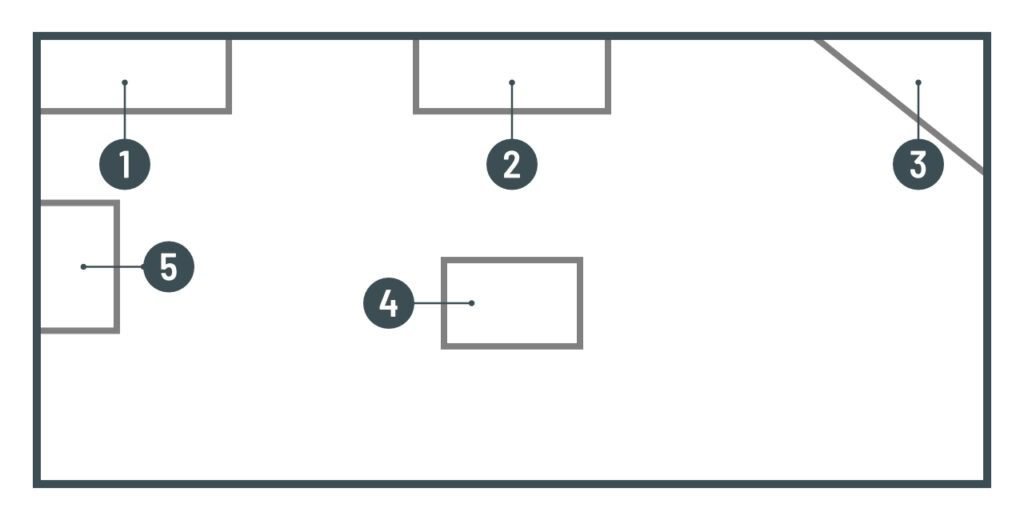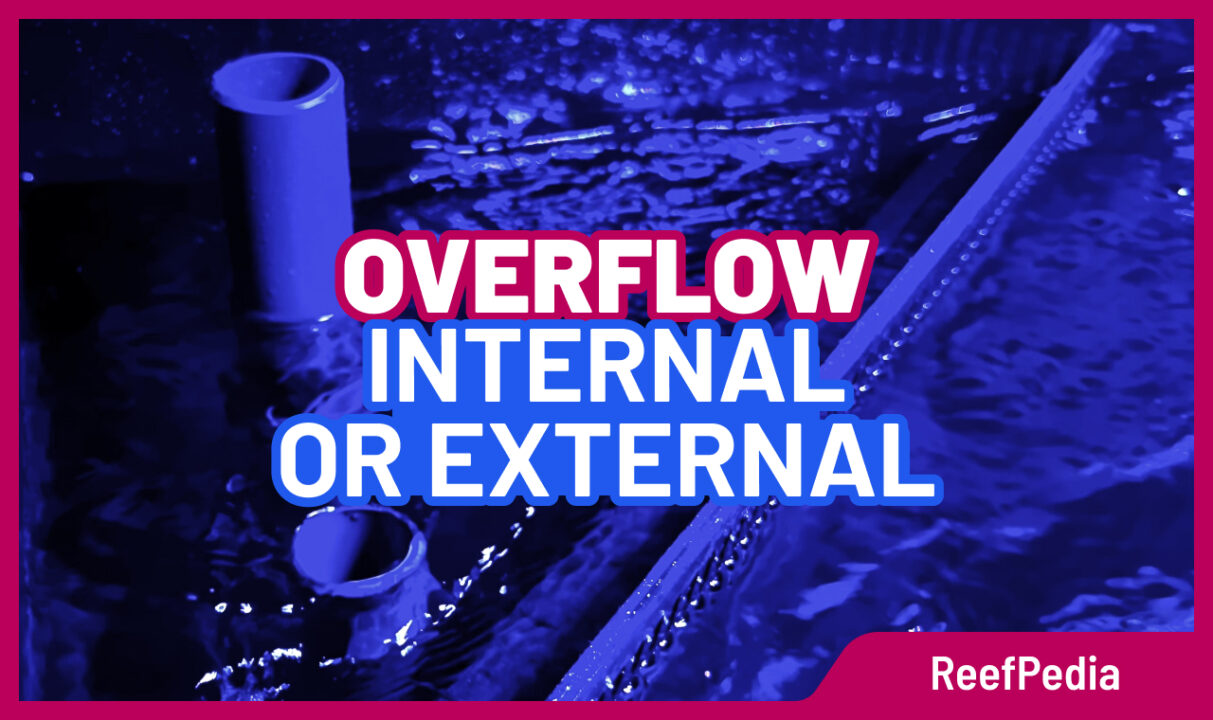Table of Contents
There are several types of overflows in marine aquaristics. In this short article, intended for beginner aquarists, I will explain the basic differences between various types of overflows.
Let’s get to it!
What is an overflow used for in a marine aquarium?
An overflow is designed so that the water gets delivered from the display tank into the sump. Here’s how it works: water from the aquarium flows into the overflow, then down into the sump, where it gets filtered and in the last step, with the help of a return pump, it’s pumped back into the aquarium.
An overflow has a few holes, usually two or three. Two of them are used to connect the hydraulics from the water drop to the sump (one hole is a drop, and the other is a revision, i.e. protection against overflow), the third hole is used to install an additional pipe to pop cables through or to connect the return pipe from the return pump.
There are two general types of overflows in marine aquariums: internal and external.
Internal overflow

In the picture above, I have presented 4 types of internal overflows. Side on the rear wall (1), central overflow on the rear wall (2), triangular, corner one on the rear wall (3), middle (4), side overflow (5).
If the aquarium will be observed from the front, we choose chimney 1, 2 or 3, and if the aquarium is to be viewed from two or three sides, option 5 would be the best. If the aquarium is displayed on each side, I’d advise to choose option 4.
We choose the internal overflow when we want it to be inside, for example, because we don’t have any more space outside the tank. The advantage of the internal overflow is that it doesn’t need to be specially built and does not take up additional space, as in the case of the external option.
External overflow

The main advantage of the external overflow is that it doesn’t take up space in the middle of the aquarium, thanks to which we have space for the rock and then corals. However, in this case, we must remember to organize an additional place at the back or side of the aquarium where we will place this element. If the overflow will not be located right next to the wall, it will be good to build it up so that the tank looks aesthetically pleasing.
We use the side overflow (1) if we want to place the aquarium so that it will be visible from two or three sides. We use the rear overflow when we plan to watch the aquarium from the front.
About the author

Marek Protasewicz
Reefkeeping has been my passion for over 10 years now. I love learning. The hobby has taught me many valuable lessons, patience being the best example. Combining work and passion is my path. I run Crazy Coral, a marine aquarium shop, for a number of years. Building this business from the scratch I learnt from my own mistakes at a heavy cost.
Later I managed a project aimed at development of methods for quick growth of Corals in non-natural conditions. The project was carried out by Get Sales, Poland. Presently, I am responsible for distribution strategy at Reef Factory, of which I am a co-founder. The company produces smart devices for marine aquaristics. The last projects I have been involved in are Social Reef and ReefPedia.



